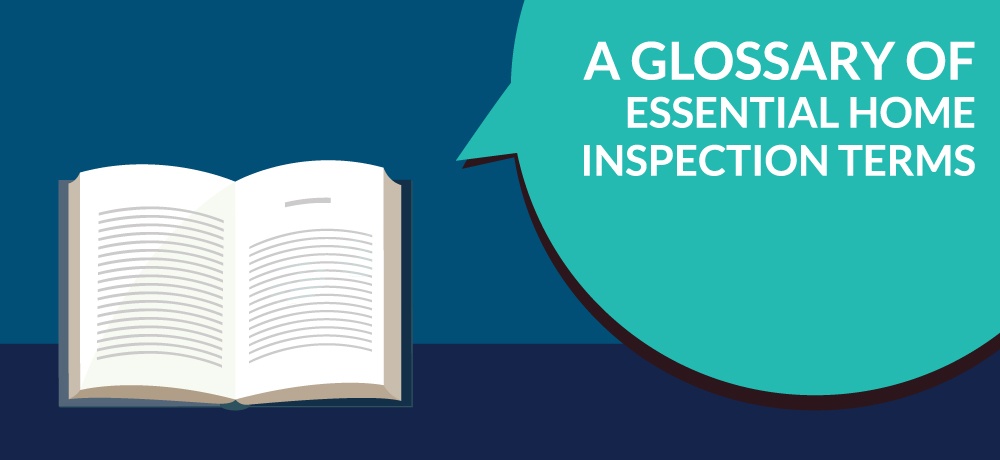A Glossary of Essential Home Inspection Terms

Every industry has its own language and terms. These words and phrases can be confusing to anyone who is not part of the daily operations of a specific industry, and the home inspection business is no exception.
To help you understand the terms, acronyms, and phrases regularly used in home inspection reports and by the inspectors, Elementary Property Inspections has created this handy reference guide. Here you’ll find valuable information allowing you to comprehend and communicate your home inspection needs effectively.
ABS.
An acronym for Acrylonitrile Butadiene Styrene, which is a rigid black plastic pipe used only for drain lines.
AFCI (arc-fault circuit interrupter).
A device intended to provide protection from the effects of arc faults by recognizing characteristics unique to arcing and by functioning to de-energize the circuit when an arc fault is detected.
Aluminum wire.
A conductor made of aluminum that carries electricity. Aluminum is generally limited to the larger wire sizes. Due to its lower conductivity, aluminum wire smaller than No.12 is not manufactured. Aluminum is lighter and less expensive than copper but does not conduct as well. It also breaks easily.
Asbestos.
A common form of magnesium silicate and naturally occurring mineral fiber that was used in various construction products and older homes because of its stability and resistance to fire. Asbestos is also the name given to certain inorganic minerals in their fibrous form. Although asbestos is fire-resistant, it is considered a serious health hazard because its extremely fine fibers are easily inhaled, and exposure to these fibers over a long period of time has been linked to cancers of the lung and the lung-cavity lining, as well as asbestosis, which is a severe lung impairment. Homeowners should be alert for the existence of friable asbestos (that which is readily crumbled or brittle) and always seek professional advice before disturbing it.
Branch circuit.
Wiring that runs from a service panel or sub-panel to outlets, like the circuit conductors between the final over-current device protecting the circuit and the receptacle(s) or outlet(s). Branch circuits are protected by fuses or breakers at the panel.
Circuit breaker.
A protective device that automatically opens an electrical circuit when it is overloaded.
Condensate line.
The copper pipe that runs from the outside of an air-conditioning condenser to the inside furnace, where the A/C coil is located.
GFCI (ground-fault circuit interrupter; GFI).
A special device that is intended for the protection of personnel by de-energizing a circuit, capable of opening the circuit even when a small amount of current is flowing through the grounding system.
HVAC.
Acronym for heating, ventilation and air conditioning, which refers to the system, work, and type of contractor.
Oriented strand board (OSB).
A manufactured wood panel made of one to two-inch wood chips and glue often used as a substitute for plywood in exterior walls and roof sheathing. It is also called chipboard, flakeboard, and waferboard.
P-trap.
A P-shaped section of drainpipe that traps water, which prevents sewer odors from escaping through the drain and into the home.
PVC (CPVC).
Polyvinyl chloride, which is used in the manufacture of white plastic pipes typically used for water supply lines.
Romex®.
Brand name for a cable consisting of two or more insulated conductors having an outer sheath of moisture resistant, non-metallic material. The conductor insulation is rubber, neoprene, thermoplastic or a moisture-resistant, flame-retardant fibrous material. It comes in NM and NMC types.
R-value.
The thermal resistance of insulation or a glazing system. The R-value is the reciprocal of the U-value. The higher the R-value, the less heat is transmitted throughout the insulation or glazing material.
Thermal imaging.
The practice of recording thermal images using an infrared camera, which can detect radiation beyond the visible spectrum and record light-gradient images representing varying temperatures in enclosed spaces that may indicate electrical hot spots, moisture intrusion, heat loss, insufficient insulation, etc. It is also called infrared thermography.
If you’re looking for a reliable home inspector, reach out to the experts at Elementary Property Inspections. We do more than just take a look at the property you plan to buy! We educate you by giving you a deep understanding of the property and an overview of how the systems in the home work, and how they should be maintained throughout the seasons and over the years.
We specialize in Niagara home inspections, Niagara air quality, asbestos testing, and black mold testing. Our services are available all across Niagara, St. Catharines, Welland, Fort Erie, Port Colborne, Fonthill, Grimsby, and Stoney Creek, so give us a call today!
To know more, view our full list of services here, or get in touch with us here.